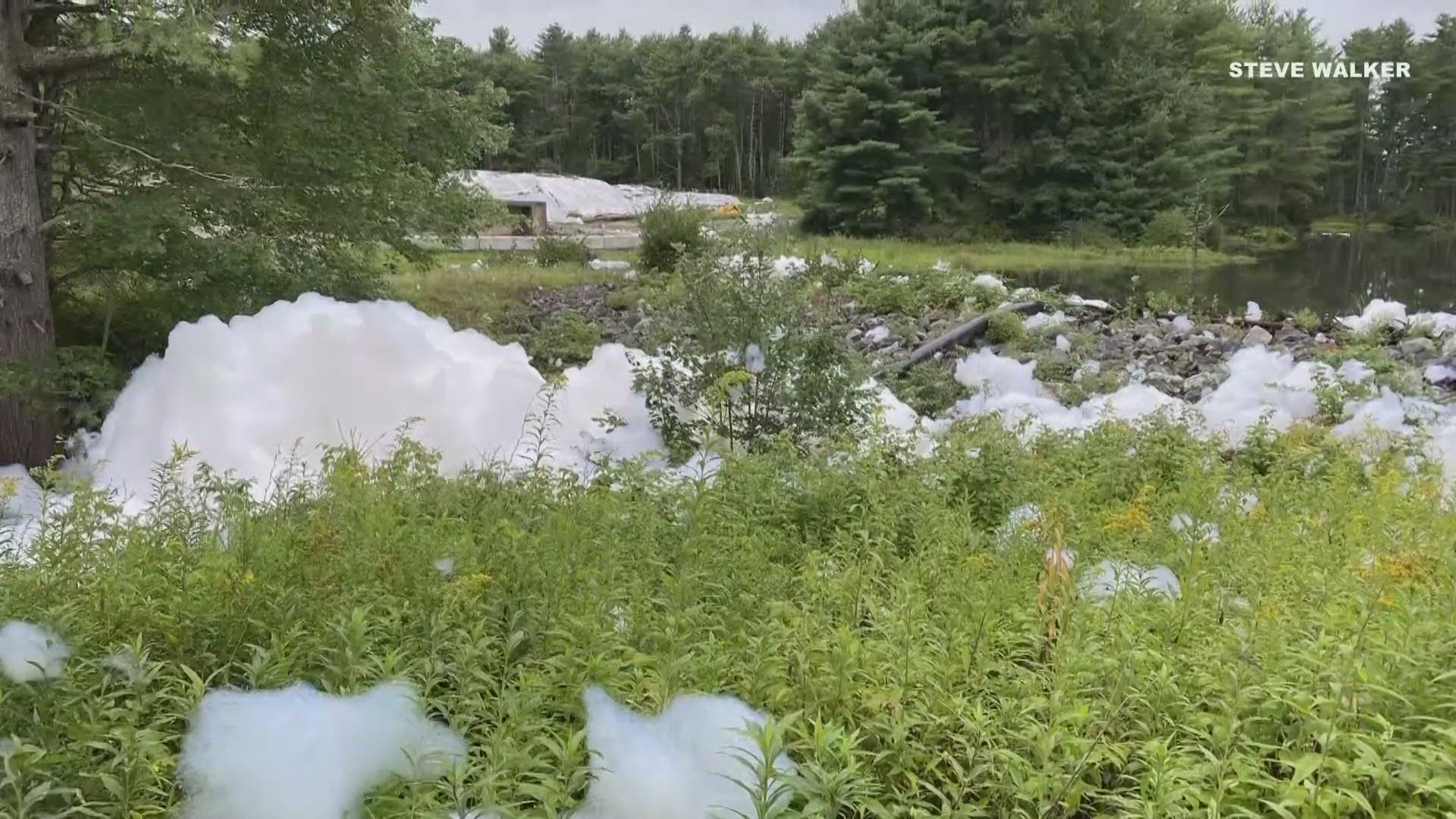BRUNSWICK, Maine — Three days after an accidental spill of more than 1,000 gallons of foam containing PFAS at the Brunswick Executive Airport, foam was still seen flying through the air on Wednesday as crews including Clean Harbors and the Maine Department of Environmental Protection attempted to clean it up.
"Foam on these ponds is being blown by the wind here, there, and everywhere," Suzanne Johnson, who sits on Brunswick's restoration advisory board, said. Johnson said this situation was one of her worst fears for the town. Although the DEP has said they have reason to believe the spill will not affect the town's drinking water, there are other environmental concerns at stake.
"This stuff is a forever chemical. It doesn't go away. So, the foam dissolves, but the chemical is still there," Johnson said. Within a mile of the Brunswick Landing are three bodies of water that make up the local storm water systems, which the DEP said have likely been contaminated with the foam. Those three sources are natural ponds filled with fish and plant life.
"Open water body sources was the storm water system for this property. This chemical spewed directly into those open bodies of water," Johnson said. The path takes the foam directly into two ponds that lead to a source called Picnic Pond, which eventually connects to Harpswell Cove.
"I believe the areas connected to the discharge are already closed," Melanie Loyzim, the Maine Department of Environmental Protection Commissioner, said at a press conference on Wednesday. The ponds are mostly unreachable by people because they've already been listed as superfund sites and blocked off by the town due to past PFAS contamination. Loyzim said those levels will likely increase now. "What we focus on is reducing exposure and preventing people from being exposed," Loyzim said.
Knowing the chemicals cannot be removed, Loyzim said the goal is to minimize the spread as much as possible and prevent human contact while they work on longer-term solutions, including exploring how they can potentially eliminate the use of fire-suppression foam. "None of these hangars are subject to specific requirements that they cannot continue to have and use the AFFF foam they already have in place."
Brunswick Fire Department Chief Ken Brillant said they follow state guidance and adopt standards from the National Fire Protection Agency. Brillant said changes in that policy would likely have to come at the state level. "Are there ways to do it? Yes, but it's a little bit more difficult than just saying we're going to take a red marker, marking things up and saying 'we're not going to follow that.'" Brillant said that process could take years, time many people in town said they can't afford to wait.
"Let's focus on the fact that there's other PFAS-based AFFF foam in other hangars. The problem we have is not yet at it's conclusion," Johnson said. Representatives for the Midcoast Regional Redevelopment Authority, which oversees most of the area, said just on the landing alone they still have over 7,000 gallons of this AFFF foam. Right across the street from Hangar 4, where the spill happened, is Hangar 6. Hangar 6 is equipped with the same amount of foam and lies much closer to the Brunswick and Topsham Water District.

